 Aug 6 2024
Aug 6 2024The Narwhal: Over half of Clayoquot Sound’s iconic forests are now protected — here’s how First Nations and BC did it
July 8, 2024
By Steph Kwetásel’wet Wood
The Narwhal
Original article here.
The Ahousaht and Tla-o-qui-aht First Nations will now manage 760 square kilometres of old-growth conservancies with the help of philanthropic funding
The forests of Clayoquot Sound became world famous as the battlegrounds of the decades-long “war in the woods” — and now, a vast swath of the rich old-growth trees are permanently protected.
In June, Ahousaht and Tla-o-qui-aht First Nations and the BC government announced 760 square kilometres of old-growth forests in the ecologically rich region on Vancouver Island are now safeguarded in ten new conservancies.
In the late ‘80s and early ‘90s, First Nations and non-Indigenous advocates joined forces to blockade industrial logging in Clayoquot Sound, home to trees about a thousand years old. The blockades culminated in the 1993 arrests of more than 850 people, drew support from thousands of activists and garnered global media attention.
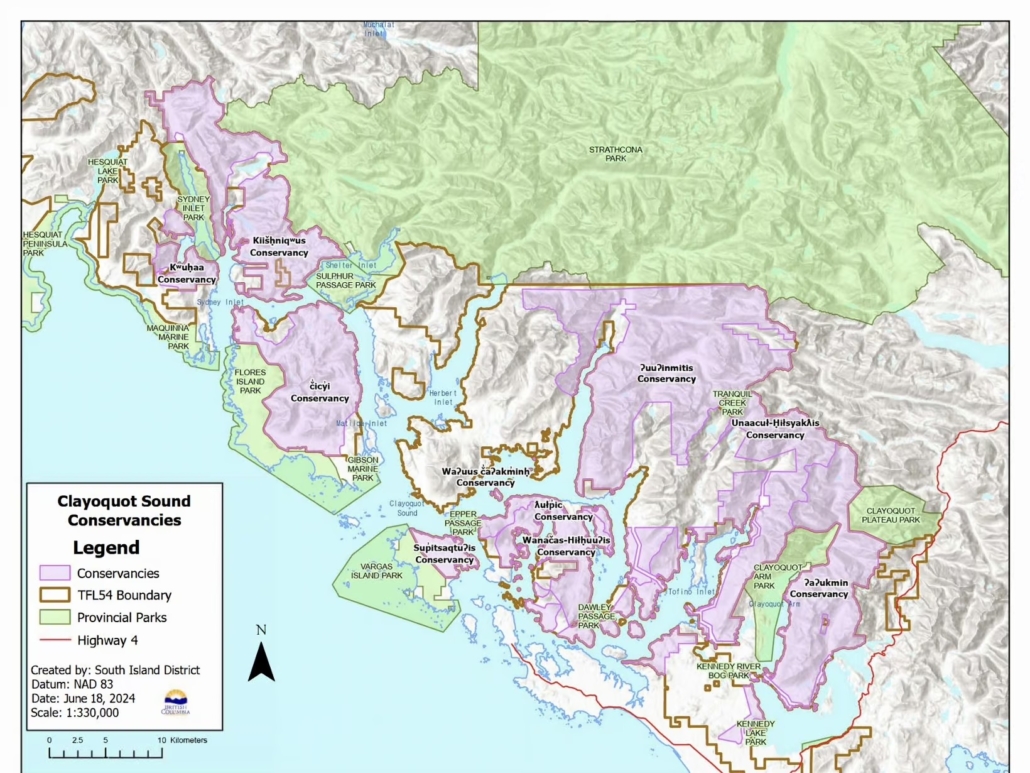
The ten new conservancies encompass some of the last-standing old-growth forests on Vancouver Island. Map: Province of British Columbia
The new conservancies, to be managed by Ahousaht and Tla-o-qui-aht First Nations, will nearly double how much old growth is protected in Clayoquot Sound to a total 1,639 square kilometres, or about 62 per cent of the area. New protections include parts of Meares Island near Tofino, where Tla-o-qui-aht First Nation declared a tribal park on part of the island in 1984.
“For 40 years, there’s been rent being paid on the tree farm licences that are on Meares Island. Every year, it still remained under threat of deforestation. Now, the first phase of protecting portions of Meares Island is done,” Saya Masso, Tla-o-qui-aht natural resources manager, said in an interview.
“That’s 40 years of trying to get our rights implemented. … It’s a monumental occasion.”
Conservation charity Nature United provided $40 million to help Tla-o-qui-aht and Ahousaht pay compensation to the forestry-tenure holder, Mamook Natural Resources, which they share ownership of, along with the other three central Nuu-chah-nulth nations. The remaining 560 square kilometres is mostly second growth and remains under the tenure of Mamook Natural Resources.
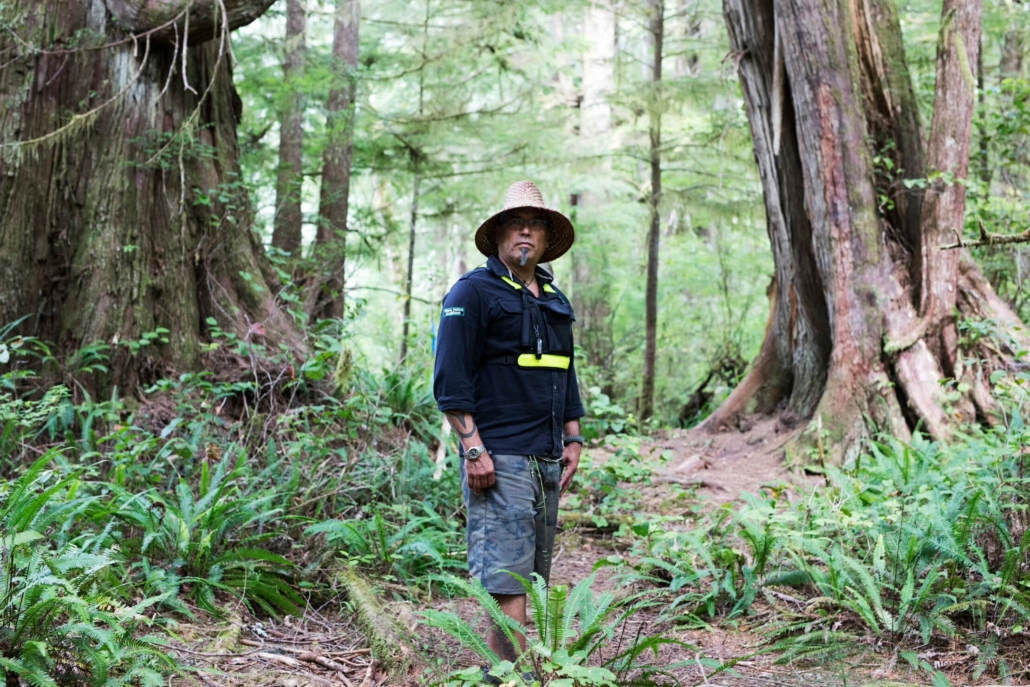
Tla-o-qui-aht First Nation natural resources manager Saya Masso, pictured on the Big Tree Trail on Meares Island, called the conservancies a “monumental” achievement. Photo: Melissa Renwick / The Narwhal
Tyson Atleo, hereditary representative for Ahousaht and natural climate solutions program director for Nature United, said the announcement builds on “generations of effort by the Ahousaht to ensure that our rights and interests are upheld.”
“While this is a milestone, this is by no means the conclusion of the work,” Atleo told The Narwhal. “This is just a step in a new direction that is going to require a significant amount of effort and resources to sustain.”
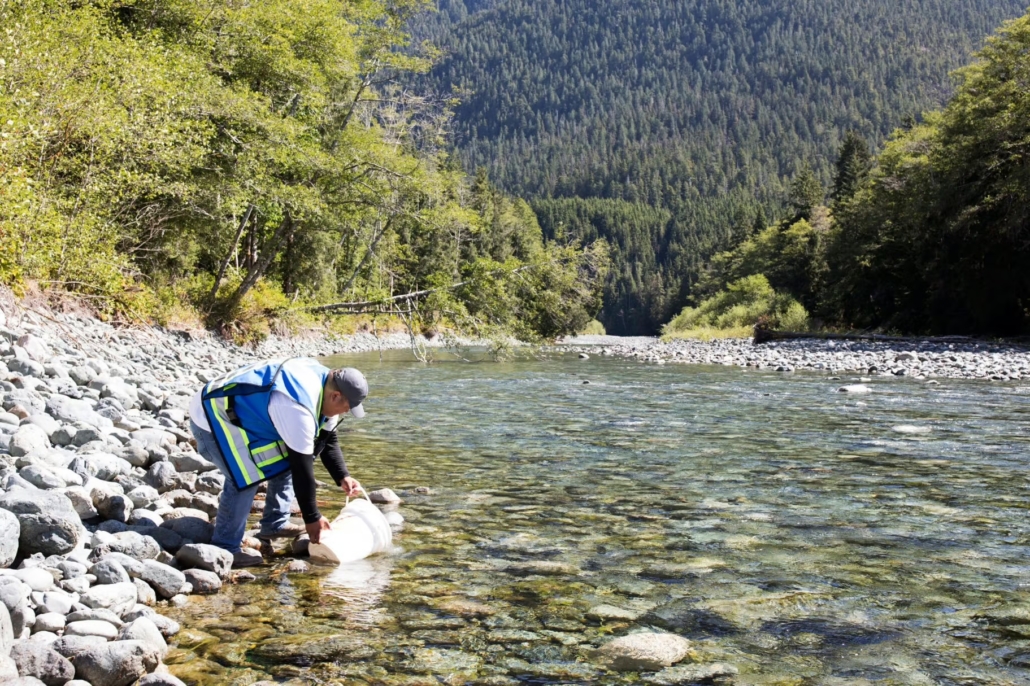
Ahousaht Guardian Byron Charlie released juvenile salmon into the Bedwell River in the Clayoquot Sound. Salmon enrich forest soil and feed other animals, while forests retain water and provide shade that salmon depend on. Photo: Melissa Renwick / The Narwhal
Clayoquot Sound: From the fiery heart of conflict to collaboration
Mike Reid, BC program director for Nature United, said Clayoquot Sound has become a symbol of the “conflict between the environment and the economy,” making the announcement of the conservancies all the more momentous.
“This is in the heart of the largest intact temperate rainforest on Earth. Clayoquot Sound is a carbon storage and sequestration powerhouse, containing some of the last remaining old-growth stands on Vancouver Island,” he said.
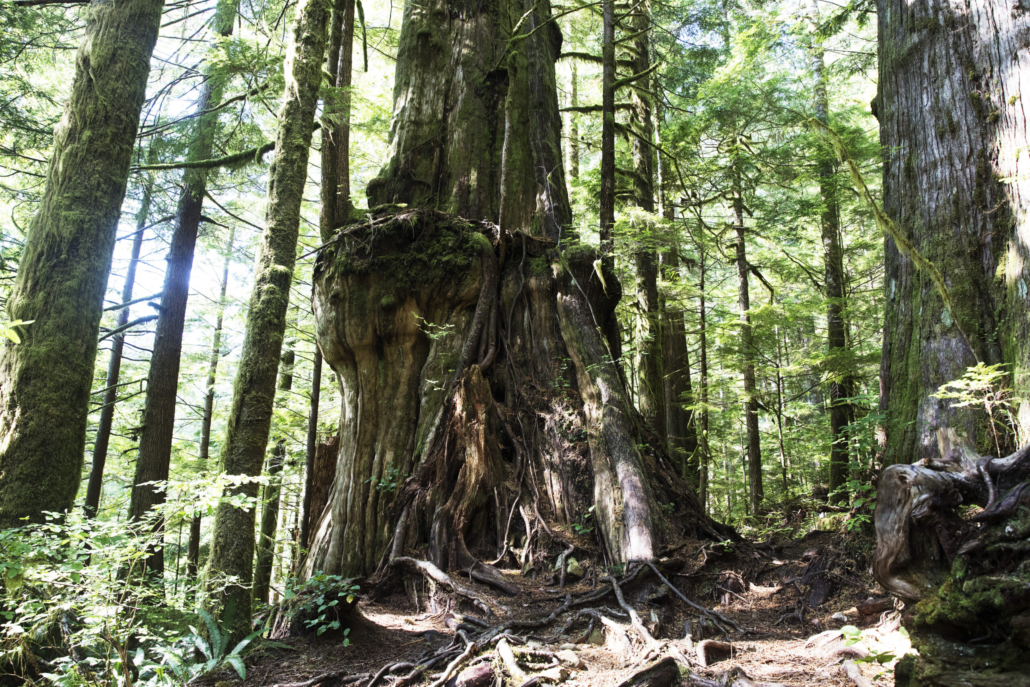
An old-growth red cedar stands within Tla-o-qui-aht First Nation traditional territory. Some trees in Clayoquot Sound are estimated to be more than 1,000 years old. Photo: Melissa Renwick / The Narwhal
Creating the conservancies required consensus from all five nations who jointly own Mamook Natural Resources. It also took years of fundraising and negotiations as each nation created and pursued their own vision for stewarding their lands and waters.
Reid hopes the decision can serve as a model for other nations and communities looking to improve forestry practices as available old growth dwindles.
“Clayoquot Sound demonstrates that there’s alternatives out there,” Reid said, pointing to carbon credits and tourism as examples of economic shifts away from old-growth logging. “Looking at alternative revenue sources and other kinds of economic development is critical for the nations who are advancing these changes.”
Protecting old-growth forests that have been ‘mismanaged’ for decades
According to Sierra Club BC, more than a third of old-growth trees have been logged on Vancouver Island since 1993, the year the “war in the woods” reached its peak with a summer of high-profile protests.
Old growth supports ecosystem health by providing water retention, shade, carbon storage and fire resilience, since older and more diverse forests are less likely to burn. It’s also integral to cultural practices like building canoes, totem poles and longhouses. The number of quality logs has plummeted, Tla-o-qui-aht Elder Tutakwisnapšiƛ (Joe Martin) previously told The Narwhal. For trees to grow strong, straight and large, they require the entire ecosystem to be functioning, he said — right down to the salmon in the streams, whose carcasses nourish the soil.
First Nations were pushed out of their stewardship roles and confined to reserves, he said in an interview, adding forests have since “been totally mismanaged by the governments.”
“They thought the ‘savages’ were just not using it. But we were actually taking care of it.”
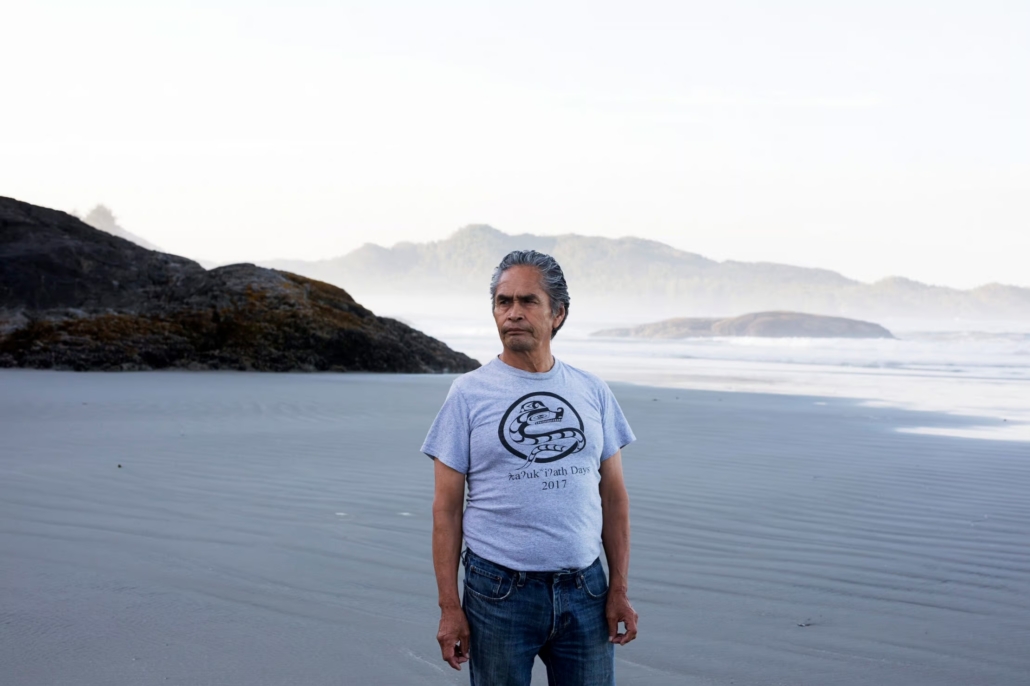
Master carver and Tla-o-qui-aht Elder Joe Martin said his ancestors would only harvest trees in the fall and winter to avoid disturbing nesting birds, and would avoid disrupting wolf or bear dens in order to prioritize the health of the whole forest. Photo: Melissa Renwick / The Narwhal
Nuu-chah-nulth culture “can’t survive on second growth,” Masso said. Keeping old forests alive is integral to the Tla-o-qui-aht land use vision and the new conservancies are just the first phase of the nation’s plan. They want to begin selling carbon credits, build up their Guardians program, protect water sources and close mineral tenures and other industrial land uses that for now the conservancy boundaries must wind around.
Masso said most old growth in Tla-o-qui-aht territory is now protected in the conservancies. The nation will develop a sustainable forestry plan for logging in Kennedy Flats, a second-growth forest area.
“It’s flat land, roadside harvest. The highest-return logging is being set up to be our grandchildren’s forestry tenure,” Masso said, explaining flat land is less costly to log than mountainous terrain. “So, I think it’s a win for everybody. We get to keep the forestry industry alive somewhat with a woodlot.”
“It’s always been an expressed interest to keep our foresters active, keep the ability to move big logs around, keep the machinery, keep the knowledge … while also protecting our culture, our drinking water, our fisheries and our access to monumental cedar.”
A step in the right direction, but ‘where to from here?’
The Ahousaht land use vision also includes addressing mineral tenures, getting into carbon credits and strengthening the nation’s Guardians program, according to Atleo. The next phase in their plan is to transition the rest of the tree farm licence into new forest licences and use the land to benefit community members.
While the conservancies are a monumental achievement, they still have a way to go in realizing their vision, Atleo said. He pointed out the conservancies are still considered Crown land by the province, and he wants to see the nation’s Indigenous Title recognized.
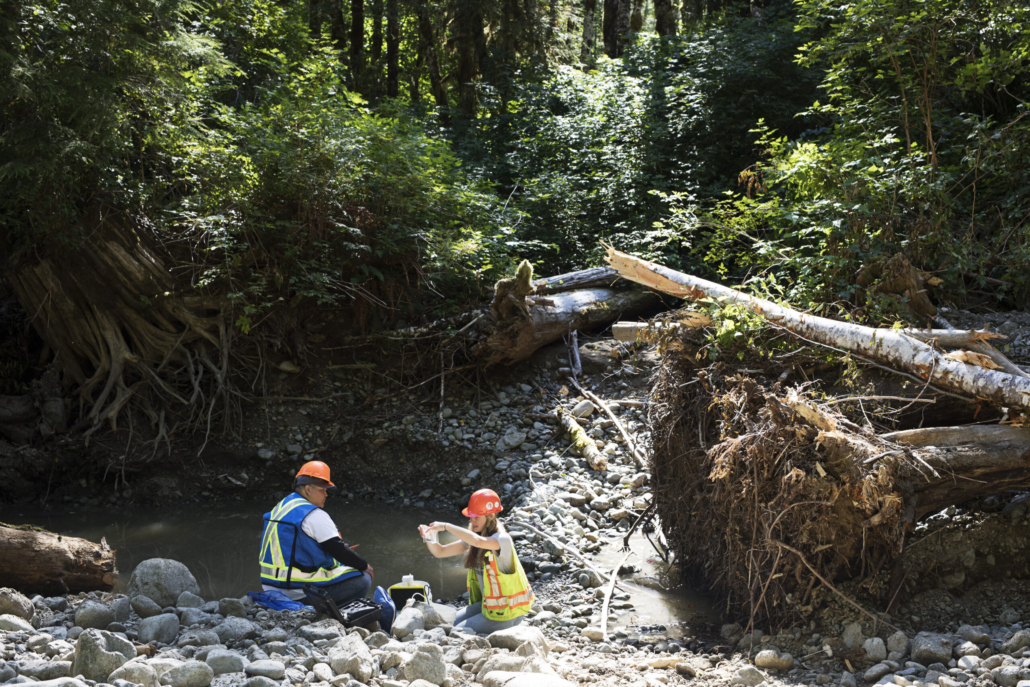
Ahousaht Guardian Byron Charlie (left) and Kaylyn Kwasnecha, Central Westcoast Forest Society research and monitoring coordinator, record the size a juvenile salmon. Tyson Atleo said many species the First Nation relies on have been decimated and conservancies are just one step towards restoring the land. Photo: Melissa Renwick / The Narwhal
Although Ahousaht is taking on more responsibility for managing lands after decades of being pushed to the sidelines, “We are not seeing an increase of support from the Crown to fund those responsibilities,” he said, noting philanthropic funding made the conservancies possible. Nature United provided Tla-o-qui-aht and Ahousaht some funding to manage the land, but the conservancies cover a huge area the nations will manage indefinitely. “It’s not enough,” he said.
“We’re stretched to make some of these things a reality. We’re taking on the responsibilities of an entire industry sector to improve on behalf of Crown governments.”
“This is a step in the right direction, unequivocally, but where to from here?”
He said Ahousaht is trying to reverse a century of policies that devastated the environment they rely on.
“It’s not our perfect scenario, right? Historically, we would not have had to make a decision to protect anything, because we would have managed the whole of the ecosystem in a much more effective way.”
He knows it will take time to get there, but for Atleo, a perfect scenario would be implementation of Ahousaht title, decision-making powers in their territory and allowing his people to benefit from the rich land and local economy “in a way reflective of our values.”
BC had quieter than usual announcement
Tla-o-qui-aht First Nation hosted a celebration in Tofino in June, commemorating the 40th anniversary of the Meares Island Tribal Park declaration as well as the announcement of the new conservancies. B Minister of Energy, Mines and Low Carbon Innovation Josie Osborne, who is also MLA for the Mid Island-Pacific Rim riding that includes Clayoquot Sound, attended the gathering and celebrated the announcement online. “Gratitude for thousands of years of stewardship by the Nuu-chah-nulth people … and today’s phenomenal announcement,” she wrote.
Environmental groups also lauded the protections as historic and momentous. Endangered Ecosystems Alliance called it the “biggest old growth protected areas victory in years.”
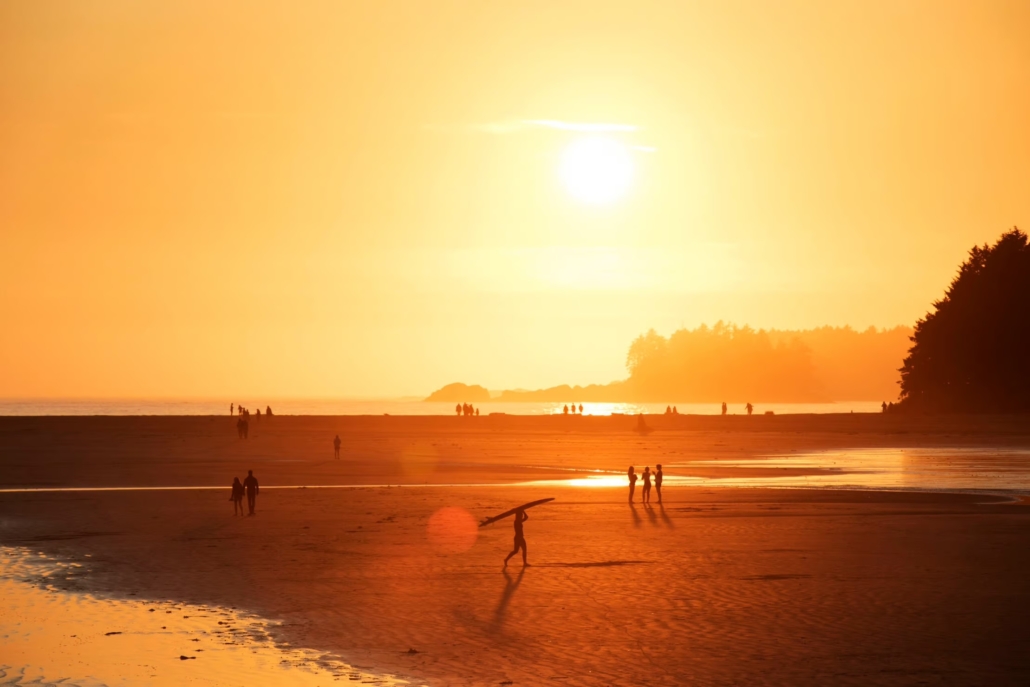
Tofino is famous for surfing, whale watching and outdoor sports, and brings thousands of visitors to Ahousaht and Tla-o-qui-aht territory. However, the nations don’t profit from the tourism to the same degree as private businesses. Photo: Melissa Renwick / The Narwhal
However, the BC government was more subdued in its announcement of the conservancies than it has been with other similar conservation agreements in the past, and did not hold a news conference. An emailed statement from the Ministry of Forests said the parties involved in the Clayoquot conservancies had “hoped to host an event to celebrate this achievement” but that “time constraints did not allow the parties to come together before the agreement was finalized.”
“I support the creation of these conservancies,” Minister of Forests Bruce Ralston said in a news release. “Collaborative work with First Nations is a cornerstone of our vision for old growth in this province. At the same time, the clarity that these conservancies will bring to the area will give our industry partners confidence in the future of forestry.”
Timeline: from the war in the woods to the biggest permanent old growth protection in decades
The First Nations have been working with Nature United to establish the conservancies for about a decade, but the roots of the conservancies go much deeper in history. Here’s a condensed timeline:
1,000 years ago: Some of the oldest trees in Clayoquot Sound standing today begin to grow.
1950s: Forestry companies build the first logging road to Tofino. The forests are logged intensively over the following decades.
1971: Pacific Rim National Park Reserve is created, raising concerns more of the surrounding forest will be logged.
1982: Canada enacts its sovereign constitution, recognizing and affirming Aboriginal and Treaty Rights.
1984: Tla-o-qui-aht, Ahousaht and non-Indigenous protesters blockade Meares Island, where logging company MacMillan Bloedel plans to log old-growth forest in an area supplying Tofino’s drinking water.
On April 21, Tla-o-qui-aht leadership declares the Meares Island (Wanachus-Hilthuu’is) Tribal Park. While they continue to patrol and steward the area, the province doesn’t formally recognize it as protected.
1980-90s: A series of blockades takes place in Clayoquot Sound that become known as the war in the woods. The Ahousaht, Tla-o-qui-aht and Hesquiaht demand better logging practices from companies and more meaningful consultation from government. Thousands of activists journey to the remote area. The war in the woods peaks in the summer of 1993 when more than 800 people are arrested — 300 in a single day.
1997: BC hands over Tree Farm Licence 54 (which encompasses Clayoquot Sound) to the five nations that make up the Central Region First Nations of the Nuu-chah-nulth Tribal Council: the Tla-o-qui-aht, Ahousaht, Hesquiaht, Yuułuʔiłʔatḥ (Ucluelet) and Toquaht First Nations. In 1997, the nations create Mamook Natural Resources, a partnership among the five nations. They are now obliged to pay the province rent for the licence.
The company works with environmental organizations to improve its forestry practices, but balancing financial needs with a desire to slow down old-growth logging isn’t easy, Masso says.
2000s: The Tla-o-qui-aht declare three more tribal parks that encompass all of the nation’s territory. The Ahousaht and Tla-o-qui-aht each develop individual land use visions and Guardians programs. In 2011, they begin to work with Nature United to buy up the tree farm licence and convert the woods to protected areas.
2020: BC announces a two-year deferral on old-growth logging in nine areas around the province, including in Clayoquot Sound. The next year, old-growth logging takes over headlines again during the Fairy Creek blockades.
2021: In November, BC launches a wider deferral plan to temporarily pause old-growth logging. The program faces criticism for putting an unfair burden on First Nations. Old growth is still being logged in deferral areas and critics say protected old growth is poorly counted.
2023: BC commits to protecting 30 per cent of lands and waters by 2030, in line with Canada’s international commitments to curb biodiversity loss.
2024: Ahousaht, Tla-o-qui-aht and the province announce the conservancies on June 18. They come into effect on June 26.
— With files from Shannon Waters





